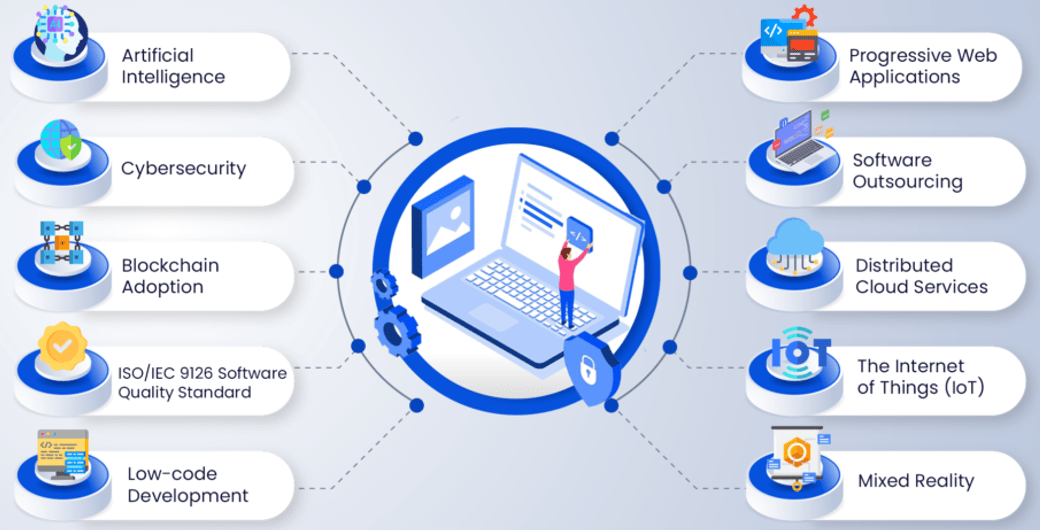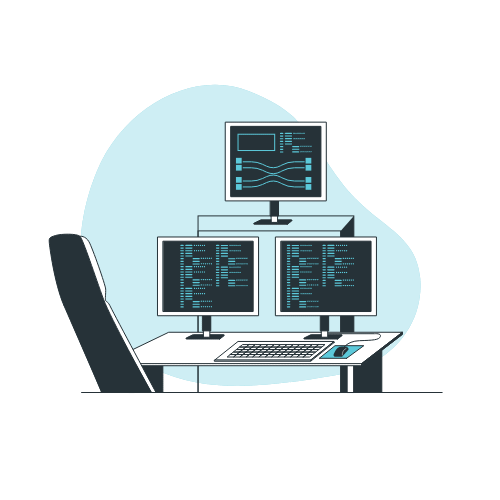Embracing the Evolution in Software Development
In the dynamic world of development, staying updated isn’t just an option; it’s a necessity. At EliteCoders, we understand that the software landscape is constantly shifting, challenging us to evolve with it.
This article dives into the crux of 2024’s software development trends, emphasizing how these advancements are revolutionizing the way we develop, secure, and deploy software.
The Rise of Generative AI in Coding: A New Era of Efficiency
Generative AI: A Game-Changer in Programming Software
The integration of generative AI into software development is more than a trend; it’s a revolution. This AI-driven approach is transforming mundane coding tasks into automated processes, enabling developers to focus on more complex and creative aspects of programming software.
As per Netsolutions, this shift towards ‘augmented programming’ is not just about efficiency; it’s about redefining the role of a programmer. Imagine a scenario where AI assists in debugging or even writing basic code structures. The potential for accelerated development cycles and enhanced code quality is immense.
The Impact on Developers and Businesses
This transformation is not just technical but also cultural. By offloading repetitive tasks to AI, developers can engage in more innovative projects, pushing the boundaries of what’s possible in software programming. For businesses, this means faster time-to-market and a significant boost in productivity.
User Experience (UX) Design: Crafting Seamless Interactions
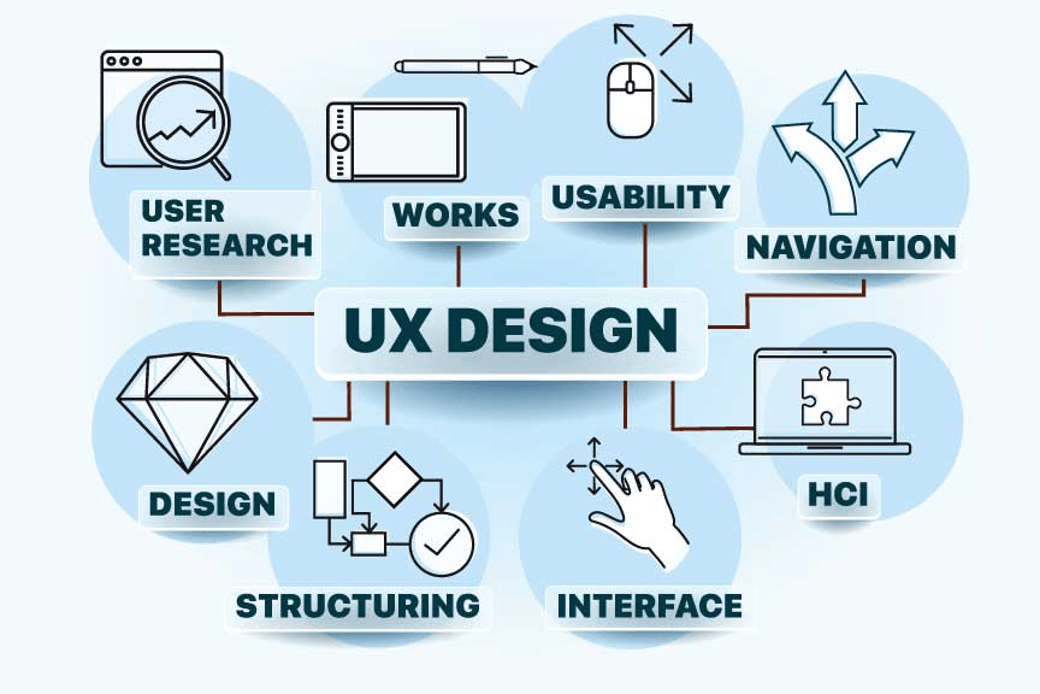
The User at the Forefront
User Experience Design has always been pivotal, but its importance has skyrocketed in recent years.
A software product’s success now hinges heavily on its UX—how intuitive, accessible, and enjoyable it is to use. This focus on user-centric design involves a meticulous process, understanding user motivations, and crafting touchpoints that exceed expectations. It’s about creating a journey that feels less like using a tool and more like a natural extension of the user’s intent.
The Eight Stages of UX Design
Incorporating UX design into software development is not a linear process but a cycle of continuous improvement:
- Understand user needs and motivations.
- Define the problem and brainstorm solutions.
- Sketch and prototype potential solutions.
- Test prototypes and gather feedback.
- Refine and iterate based on insights.
- Develop the final product.
- Deploy and monitor user interactions.
- Update and improve continuously based on user feedback.
DevSecOps: The New Standard in Secure Software Development
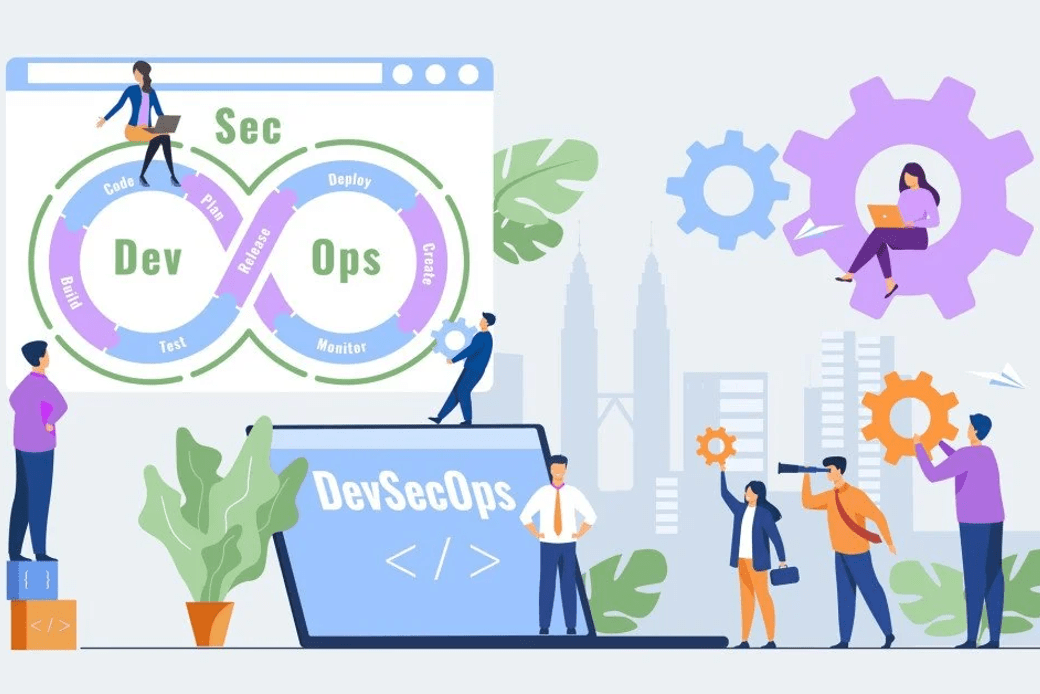
Security Embedded in Every Stage
The traditional approach of considering security as an afterthought in development is obsolete. DevSecOps—the practice of integrating security measures throughout the development lifecycle—is becoming the norm.
As stated by Netsolutions, nearly 80% of organizations have begun applying DevSecOps, recognizing the critical need to embed security from the outset. This shift ensures software is secure by design, drastically reducing vulnerabilities and enhancing trust.
Real-World Impact of DevSecOps
Incorporating DevSecOps isn’t just about avoiding risks; it’s about building a culture of security. It involves everyone in the development process, from coders to testers, making security a shared responsibility. The result? Robust, reliable software that stands up to the increasing sophistication of cyber threats.
The Omnichannel Approach: Unifying User Experiences Across Platforms
Seamless Integration Across Touchpoints
The omnichannel experience is more than a buzzword; it’s a fundamental shift in how we interact with technology. It’s about providing a cohesive experience to users regardless of the platform, be it mobile, web, or physical interactions. As pointed out by Netsolutions, a disrupted, fragmented omnichannel experience can lead users to abandon a service altogether.
Realizing the Omnichannel Vision
Achieving a true omnichannel experience requires meticulous orchestration of various technologies—IoT, backend systems, and frontend interfaces. It’s a symphony of different elements, each playing its part to create a seamless user journey.
AI and Machine Learning: Pioneers of Modern Software Development
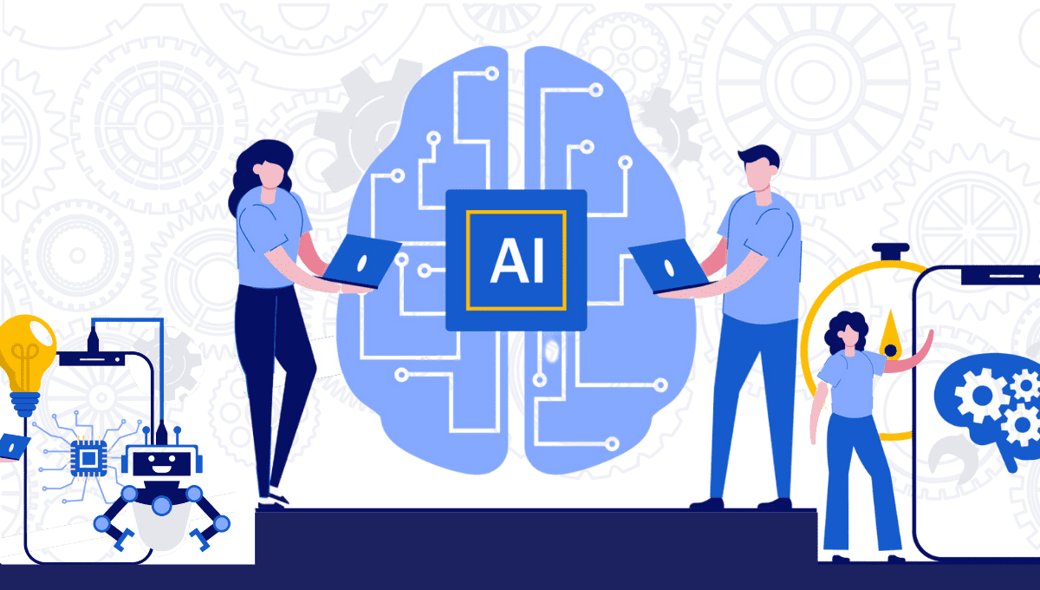
AI and ML: At the Heart of Innovation
Artificial Intelligence (AI) and Machine Learning (ML) have shifted from being mere buzzwords to becoming core drivers in development.
A3logics highlights the significant role AI has played across various industries, from healthcare to e-commerce. By harnessing AI’s advanced pattern recognition and ML’s predictive capabilities, we’re witnessing a new era of software solutions that are smarter, more intuitive, and incredibly efficient.
Transforming the Development Landscape
AI’s role in software development is now indispensable. For example, TensorFlow, developed by Google, is a testament to the power of AI in programming software.
It’s not just a tool; it’s an enabler that allows developers to experiment, innovate, and build complex neural networks and ML solutions rapidly. This integration of AI and ML isn’t an option anymore; it’s a necessity for staying competitive and relevant in today’s fast-paced tech world.
Python’s Dominance in Diverse Domains
The Versatile Powerhouse
Python continues to be a force to be reckoned with in the programming software world. As DZone points out, its applications range from web development to machine learning, making it a versatile and powerful language. Python’s simplicity and readability, combined with its robust library ecosystem, make it the go-to choice for developers looking to tackle complex tasks efficiently.
Fueling Innovation Across Industries
Python’s role in driving innovation cannot be overstated. Whether it’s AI, IoT, or web development, Python is at the forefront, enabling developers to create solutions that are not only effective but also cutting-edge. The language’s continuous evolution ensures that it remains relevant and powerful in the ever-changing landscape of software development.
React Native and the Evolution of Cross-Platform Development
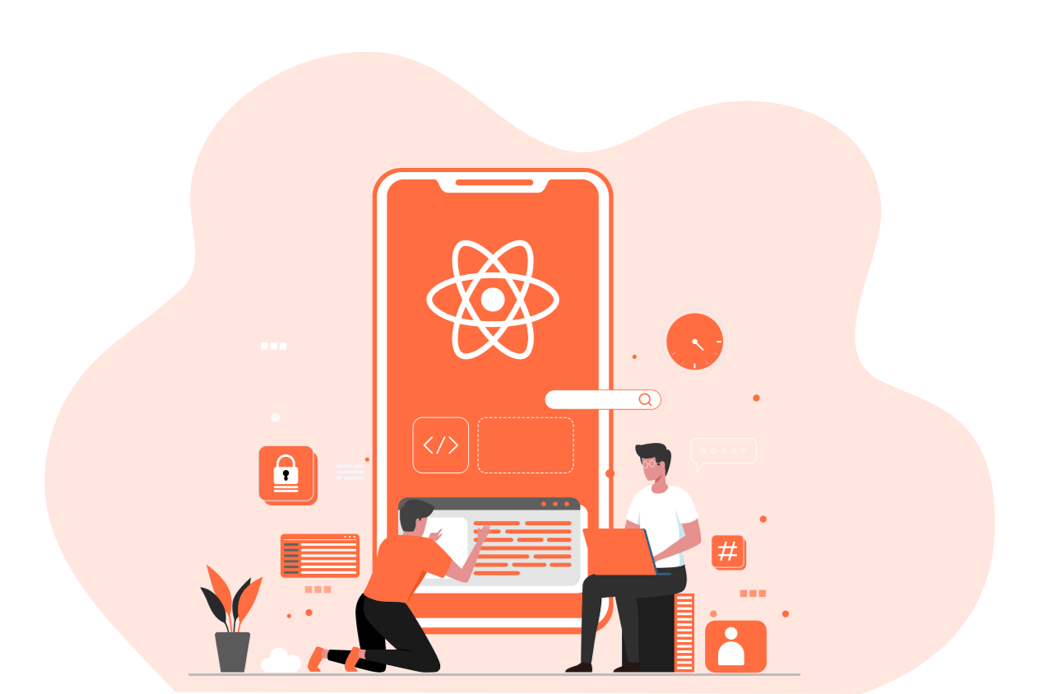
Revolutionizing App Development
React Native has emerged as a game-changer in the world of app development. Its ability to allow developers to build applications for multiple platforms using a single codebase is not just efficient but cost-effective too. As noted by DZone, this cross-platform framework is redefining how apps are developed and deployed, offering a unified development experience.
The Rise of Cross-Platform Efficiency
The demand for cross-platform solutions is on the rise, and React Native is leading this charge. By enabling developers to create high-quality applications for both Android and iOS with ease, it’s breaking down barriers and opening up new possibilities for businesses looking to expand their digital footprint across multiple platforms.
The Pivotal Role of 5G Technology in Software Development
5G: The Game-Changer in Connectivity
5G technology is more than just faster internet; it’s a catalyst for revolutionary changes in software development. As AppsDevPro suggests, the implications of 5G extend far beyond just quick downloads. It’s paving the way for advancements in AI, VR, and other cutting-edge technologies, enabling them to grow at an unprecedented pace.
Unlocking New Possibilities
The advent of 5G is setting the stage for a new era in software development. With its ultra-fast speeds and low latency, it’s opening up a world of possibilities, from enhanced mobile experiences to new frontiers in IoT and smart technology. The potential of 5G to transform how we develop and interact with software is immense and truly exciting.
The Intersection of Technology and Innovation
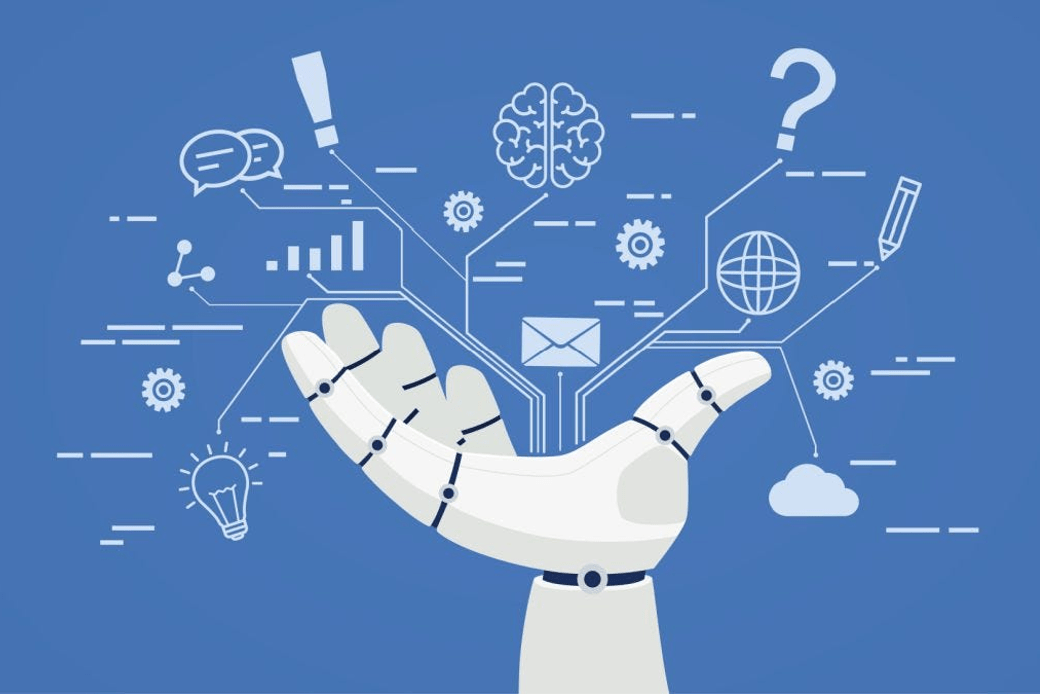
As we round off our exploration of the transformative trends in software development for 2024, it’s clear that we’re not just witnessing evolution; we’re part of a revolution. These trends signify a leap towards a future where technology is not only more accessible and efficient but also more integral to our everyday lives.
Progressive Web Apps (PWAs): Bridging Gaps, Enhancing Experiences
The Seamless Web-Mobile Hybrid
Progressive Web Apps (PWAs) have become a beacon of change in how we experience web and mobile applications. PWAs dissolve the line between web and mobile, offering the full functionality of a native app with the versatility of a website.
As stated by a Google Developer Expert, “PWAs are redefining user experiences on the web. They load faster, are more engaging, and can be easily integrated into existing web platforms.”
This aligns with findings by Spaceo, where companies like Aliexpress saw significant increases in conversion rates after adopting PWA technology.
Key Benefits of PWAs:
- Faster load times and improved performance.
- Offline functionality, enhancing user accessibility.
- Increased user engagement and retention rates.
The New Paradigm: Automated Code Reviews
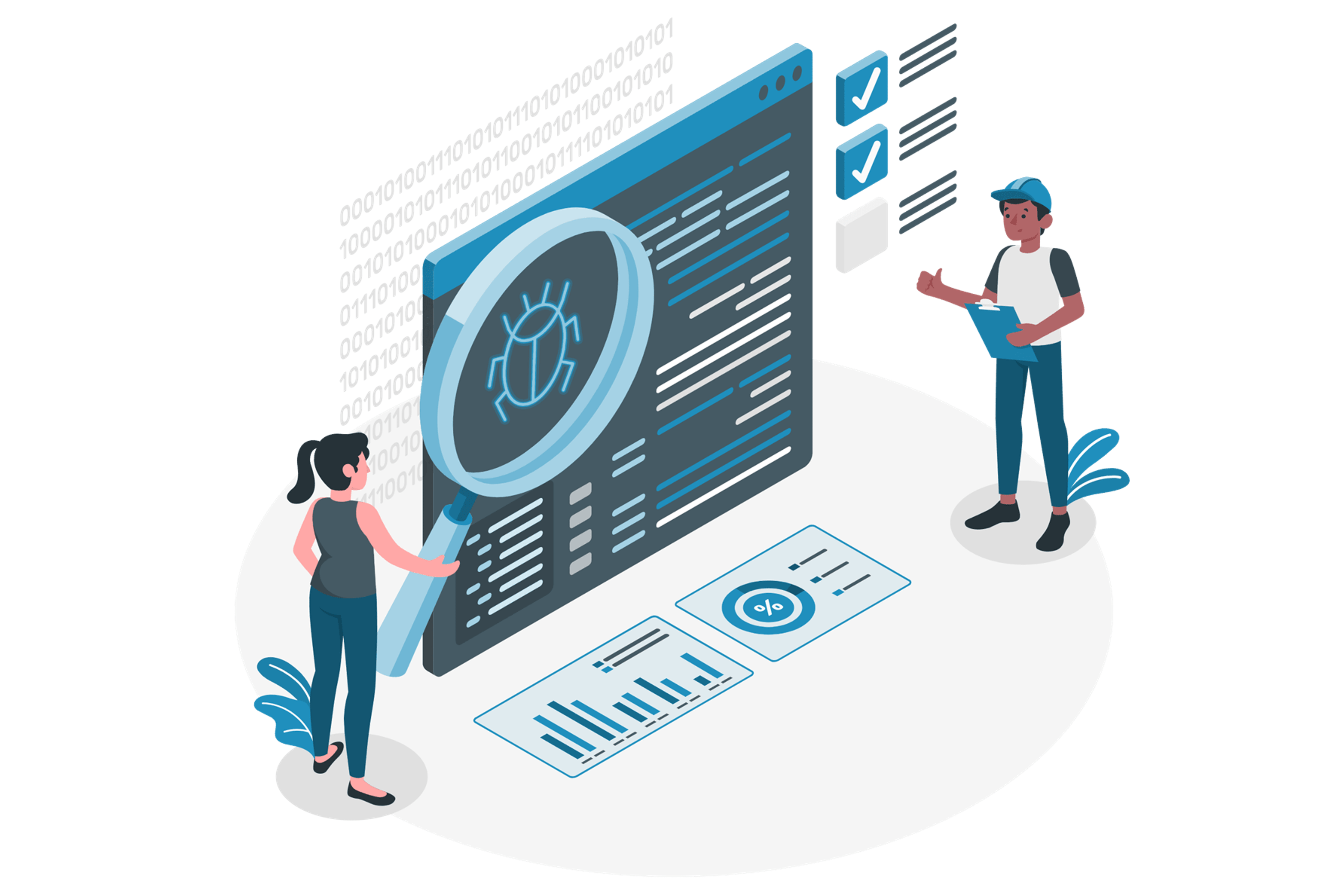
Enhancing Code Quality with AI
In the realm of software development, efficiency, and quality go hand in hand. Automated code reviews, powered by AI, are revolutionizing this space. These tools, such as DeepSource and Codacy, provide an automated layer of quality control, ensuring code is not only functional but also adheres to best practices.
The benefit, as highlighted by Spaceo, is a significant reduction in manual review time and an overall improvement in code quality.
Advantages of Automated Reviews:
- Automated detection of errors and code smells.
- Consistency in code quality across projects.
- Increased productivity and faster development cycles.
Navigating the Future of Software Development
In conclusion, the software development landscape of 2024 is diverse and dynamic. From the democratization of technology through low-code/no-code platforms to the security-first approach of DevSecOps, each trend represents a key piece of the puzzle in creating software that’s not just innovative but also resilient and user-centric.
A Future Fueled by Innovation and Collaboration
As an industry leader, EliteCoders is committed to harnessing these trends to deliver solutions that not only meet but exceed the expectations of our clients. We believe in a future where technology empowers and elevates, and we’re excited to be a part of this journey.
Join Us in Shaping Tomorrow
We invite you to join us at EliteCoders as we navigate this exciting era of software development. Whether you’re looking to modernize your existing solutions or embark on new technological ventures, our team is equipped to bring your vision to life. Connect with us, and let’s create a future where technology knows no bounds.
